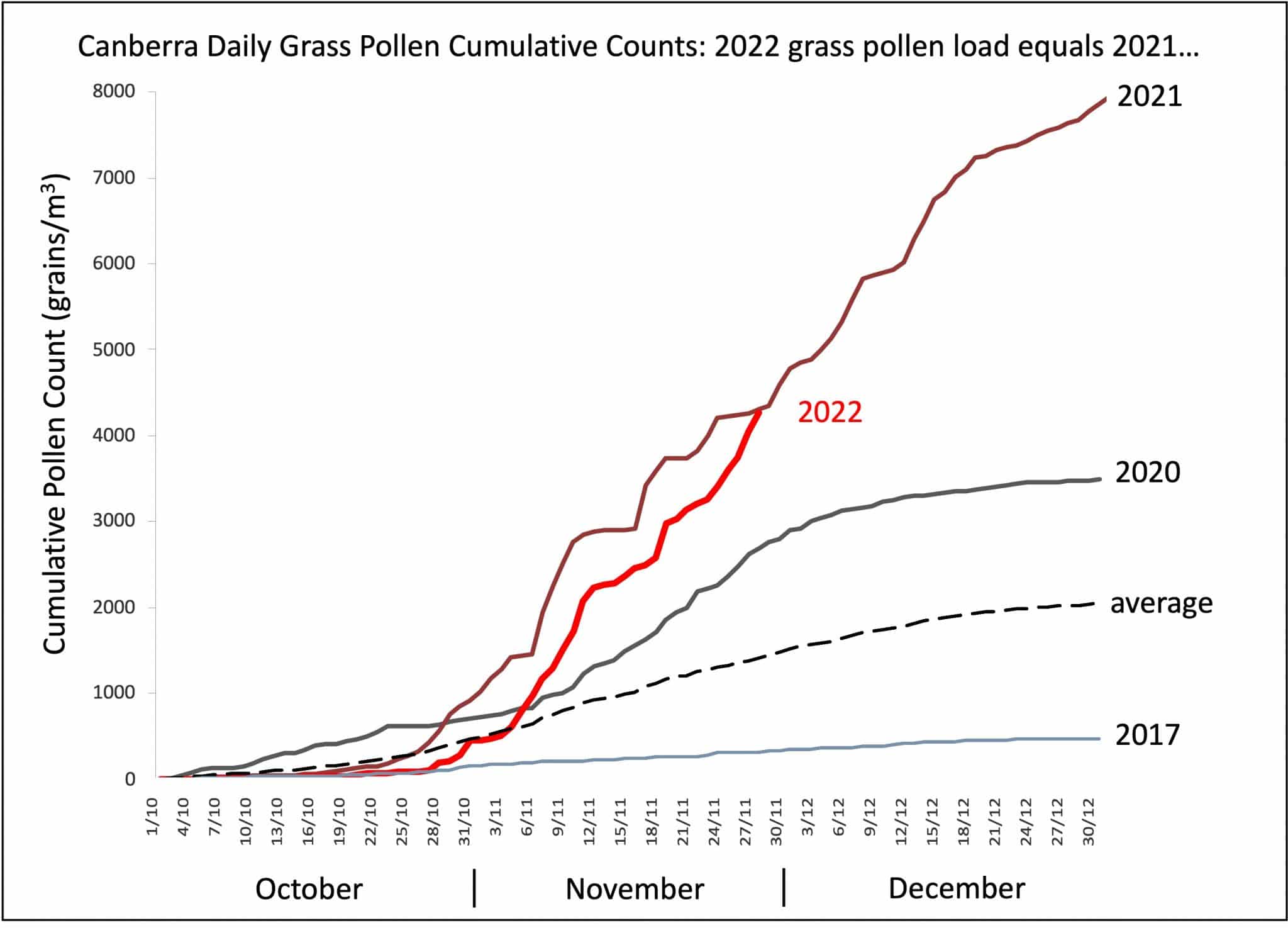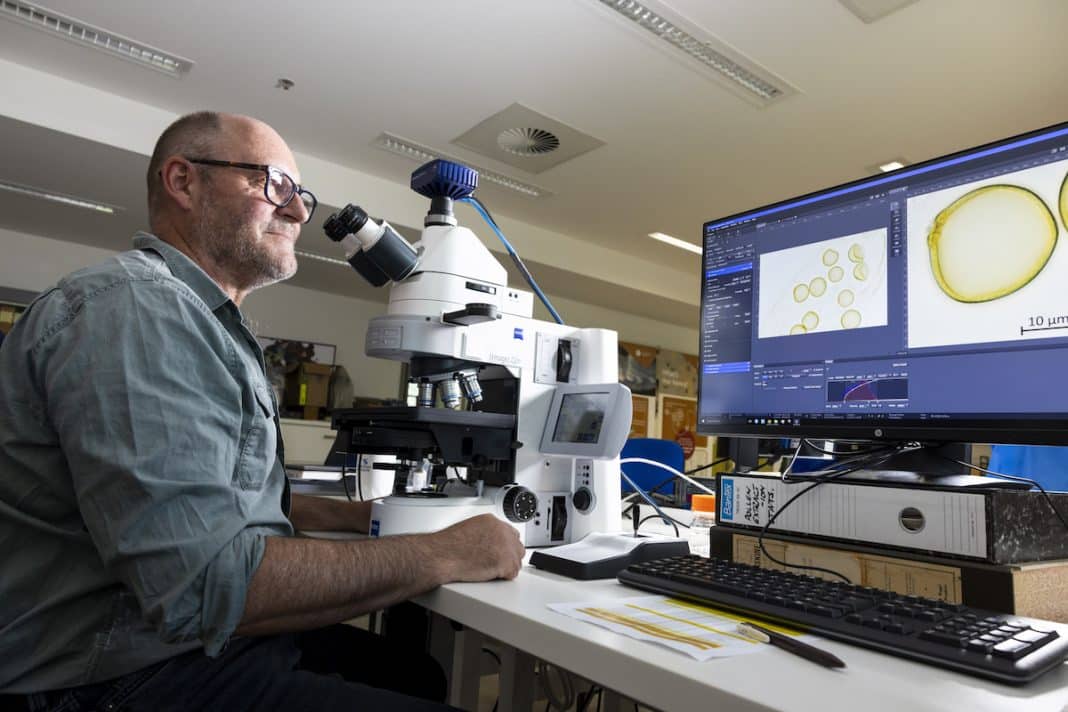Experts at the Australian National University predict “no real relief on the horizon” for hay fever sufferers in Canberra until January 2023, in part thanks to La Niña.
Professor Simon Haberle, Director of the Canberra Pollen monitoring program which has been counting pollen in the region since 2007, says this season is well on track to beat the 2021 record for most extreme grass pollen days in a year.
Last Monday, 28 November, was the 17th extreme pollen day in Canberra this year.
Even in the bush capital, such high levels of grass pollen are unusual, according to Professor Haberle.
“On average, we see three to five extreme days of grass pollen in a season… We’re about to exceed any past records of grass pollen in the air, both in terms of amount and number of extreme pollen days.”
He attributes this to a perfect storm of weather conditions.
“One of the reasons is La Niña. We’ve had such a long period of high rainfall through the winter and spring months and that has generated high grass growth and strong pollen production.
“Then we have the strong winds over the last couple of months, enhancing the amount of grass pollen in the air.
“The season is extended substantially because of current weather conditions. We expect to see high levels of grass pollen into late December and even into early January.
“2021 was our record year for grass pollen, with 28 extreme days. We have reached where we were this time last year and are looking to exceed that very soon.”

As to why Canberra is a hot spot for hay fever, it comes down to one word: Grass.
“Grasslands surround the city. Grass pollen is blown from those pastures over many kilometres into the city area.
“The city itself also has a lot of plants that are relatively high in allergy properties, including cypress pines, oaks, elms, and birch trees – common species found in the streets and gardens of Canberra.”
However, Professor Haberle explains, grass pollen dominates all other pollens as the number one culprit for wheezing and itchy eyes.
“Rye grass is the key allergy-causing grass in this region. It’s not a native species; there are very few native plants that we are aware of that cause allergies.
“Settlers saw [Rye] as a way of improving the pasture quality in the area, so they got rid of the native grasses and replaced them with introduced types.
“A rural area like Wagga Wagga has one of the longest pollen monitoring programs in Australia because of this problem.”
If you are experiencing debilitating hay fever, there are a few steps you can take: ask your GP and pharmacist for an asthma or hay fever plan to get your symptoms under control as much as possible; wear a mask to reduce pollen inhalation; and stay indoors during extreme days.
You can plan ahead by checking the grass pollen forecast at canberrapollen.com.au or downloading the Canberra Pollen app.
Get local, national and world news, plus sport, entertainment, lifestyle, competitions and more delivered straight to your inbox with the Canberra Daily Daily Newsletter. Sign up here.



